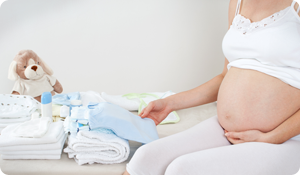
It's not for everyone. But for an expectant mom who wants to give birth in familiar surroundings, have more control over various aspects of the birthing process, and avoid medical interventions such as drugs, home birth may be a viable option.
And it's an option more pregnant women are choosing. After declining from 1990 to 2004, the percentage of U.S. home births increased by 29 percent in 2009, according to the Centers for Disease Control and Prevention. Giving birth at home is more common in women over age 35 and women who already have several children. Overall, however, the number of babies born at home is still low, comprising less than 1 percent of all births.
The Anatomy of a Home Birth
A woman who delivers at home typically is assisted by a midwife or nurse-midwife. Unlike in a hospital, where your baby's heart rate is continuously monitored by your healthcare provider, the baby's heart rate is monitored periodically in a home birth. At home, once your baby is born, your healthcare provider will watch your newborn closely, and you will be able to bond with him in the comfort of your own home. You might receive follow-up care in the form of home visits and support with breastfeeding.
Who Is Not a Candidate for Home Birth?
However, many women should not attempt to give birth at home, period, experts say. "You need to do your research," says Ashlesha Dayal, MD, maternal fetal medicine specialist and director of labor and delivery at Montefiore Medical Center in New York City. "How far are you from a hospital in case of problems? Who will care for the baby when it is born? You really need to be aware of potential problems, and you need someone qualified to be with you at all times."
The following women should not give birth at home:
Pregnant women with
- Diabetes
- Chronic hypertension (high blood pressure)
- A seizure disorder
- Any chronic medical condition
And those who
- Have had a C-section (Caesarean)
- Smoke cigarettes
- Have a complication like preeclampsia (a condition characterized by high blood pressure, swelling, and protein in the urine)
- Are pregnant with multiples
Another Warning
Sometimes, during labor, complications can put an otherwise healthy mom-to-be and her baby at risk, says Karen Deighan, MD, chair of OB/GYN at Gottlieb Memorial Hospital in Melrose Park, IL. "A perfectly normal labor patient can have a complication even though she looks great on paper and it's her second or third baby," she says. "There is no way you can anticipate complications."
For instance, she says, there is the risk of a postpartum hemorrhage (bleeding), which would require immediate medical intervention. Other possible problems are a condition called shoulder dystocia, when the baby's shoulders are too big for the mother to deliver vaginally; an umbilical cord prolapse (when the cord slides out before the fetus does), or a fetal heartbeat abnormality.
"Any low-risk obstetrical patient can become a high-risk obstetrical patient at any time," Deighan cautions. So if the idea of a home birth appeals to you, talk to your healthcare provider, and be sure you're aware of all the risks involved.
Karen Deighan, MD, reviewed this article.
Sources:
"Home Birth: Know the Pros and Cons." Mayo Clinic. Web. 21 June 2011. Page accessed 24 August 2013.
http://www.mayoclinic.com/health/home-birth/MY01713
Marian F. MacDorman, T.J. Mathews, and Eugene Declercq. "Home Births in the United States, 1990-2009." Centers for Disease Control and Prevention. NCHS Date Brief January 2012, No. 84. 26 Jan. 2012. Page accessed 24 August 2013.
http://www.cdc.gov/nchs/data/databriefs/db84.htm





